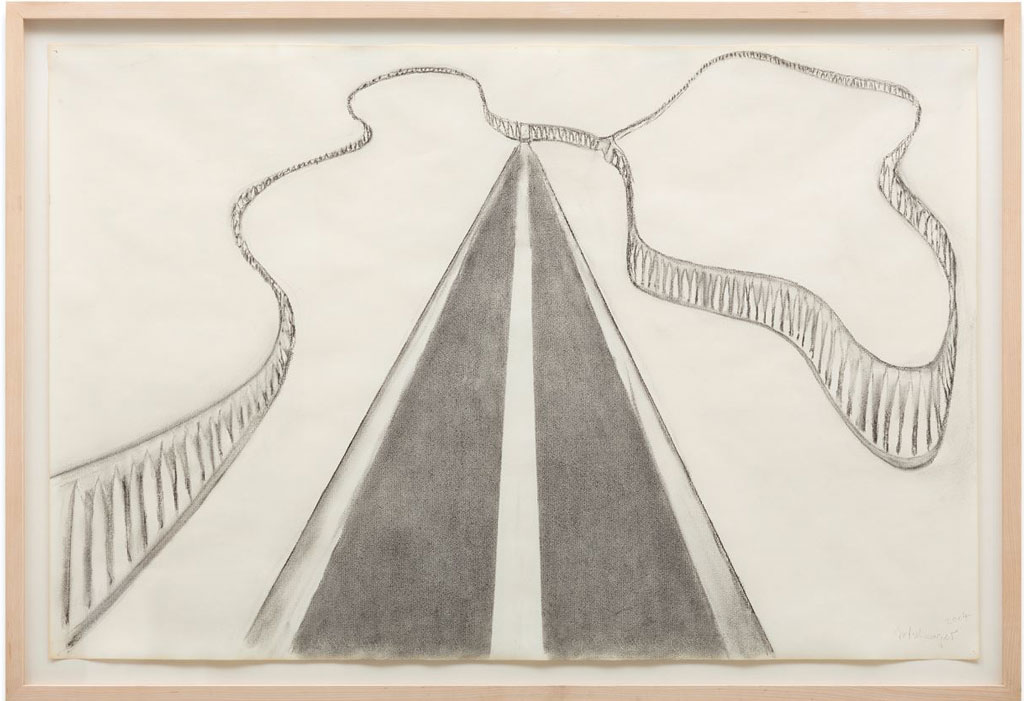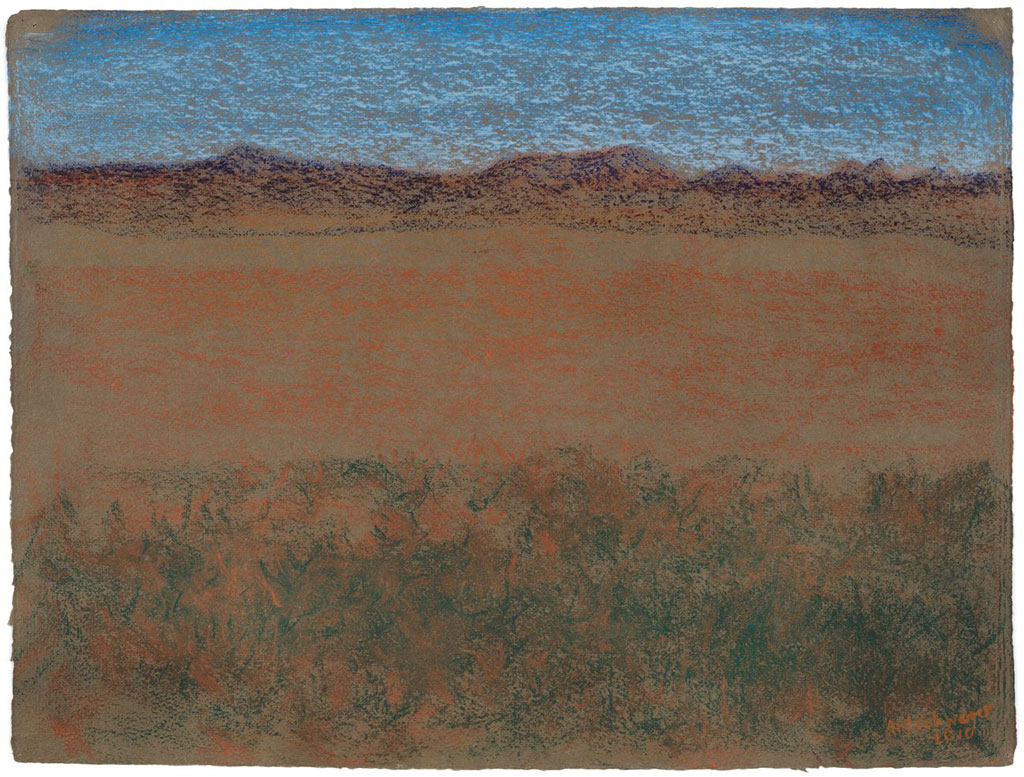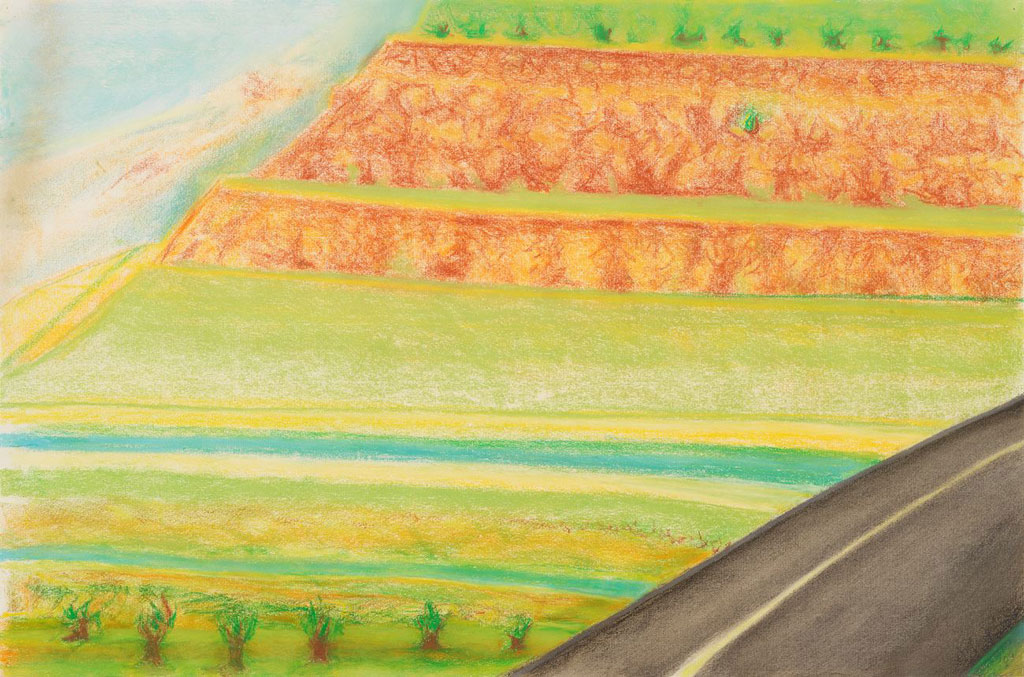ART CITIES:Berlin-Richard Artschwager
 Richard Artschwager forged a unique path in art from the early 1950s through the early 21st Century, making the visual comprehension of space and the everyday objects that occupy it strangely unfamiliar. His work has been variously described as Pop art, because of its derivation from utilitarian objects and incorporation of commercial and industrial materials; as Minimal art, because of its geometric forms and solid presence; and as Conceptual art, because of its cool and cerebral detachment. But none of these classifications adequately define the aims of an artist who specialized in categorical confusion and worked to reveal the levels of deception involved in pictorial illusionism.
Richard Artschwager forged a unique path in art from the early 1950s through the early 21st Century, making the visual comprehension of space and the everyday objects that occupy it strangely unfamiliar. His work has been variously described as Pop art, because of its derivation from utilitarian objects and incorporation of commercial and industrial materials; as Minimal art, because of its geometric forms and solid presence; and as Conceptual art, because of its cool and cerebral detachment. But none of these classifications adequately define the aims of an artist who specialized in categorical confusion and worked to reveal the levels of deception involved in pictorial illusionism.
By Dimitris Lempesis
Photo: Sprüth Magers Gallery Archive

Bringing together colored pastel drawings, the exhibition “New Mexico” explore Richard Artschwager’s newfound interest in landscapes that arose during the last years before his death in 2013. These works have been rarely exhibited since their creation, and provide a unique insight into the artist’s approach to colour and subject matter in his later life. Landscapes first entered Artschwager’s repertoire in 2007, following a visit to his childhood home of New Mexico in 2006. The colured pastel drawings recall landscapes first introduced to him as an artistic subject by his mother, an artist herself, during trips to the desert surrounding Las Cruces. When the Artschwager family first moved to New Mexico from Washington D.C. in 1937, the young Richard Artschwager thought of it as a great adventure. Remarkably, it wasn’t until his mid-1980’s that he began to revisit these early memories within his art. These later works signal a departure from his established themes, exploring the materiality of the natural world. Departing, too, from his favoured grisaille tones in paintings and drawings, Artschwager opts for an unusual choice of palette – muted yet rich. In a very poetic sense, these images engage with artistic concerns and personal memories that endured throughout Artschwager’s career – therefore, this series could be seen as taking the artist full circle from childhood to old age. The drawings in the exhibition can be interpreted as a continuity of Artschwager’s belief that art lies as much in seeing as in making. Strong compositional elements are typified by bands of dense, tonal colors of varying textures and widths. Artschwager’s inimitable tactility is unreservedly present in these works: favouring substantial textures, he sets the focus on the effects of pastels on different types of paper ranging from standard white paper to coloured, velvet, and sandpaper. The surface of the paper thus becomes an essential attribute of the work itself. Recalling the imagery of classic American road movies, these drawings invite the viewer to join Artschwager in revisiting the landscape of his early memories. Gazing out of a backseat window into the vast landscape is a universally familiar experience, yet evokes very personal memories; the scenery passing by in the distance allowing for contemplation in the face of nature’s duality of liveliness and timelessness.
Info: Sprüth Magers Gallery, Oranienburger Straße 18, Berlin, Duration: 11/3/30/6, Days & Hours: Tue-Sat 11:00-18:00 by appointment only*, http://spruethmagers.com
* Visits are to be scheduled through an online booking system




Right: Richard Artschwager, Sixty +, 2008. Charcoal, acrylic on handmade paper on Celotex. 52,1 x 35,9 cm (framed), © Estate of Richard Artschwager/Artist Rights Society (ARS), NY 2020/VG Bild-Kunst, Bonn 2020. Courtesy Gagosian Gallery and Sprüth Magers
